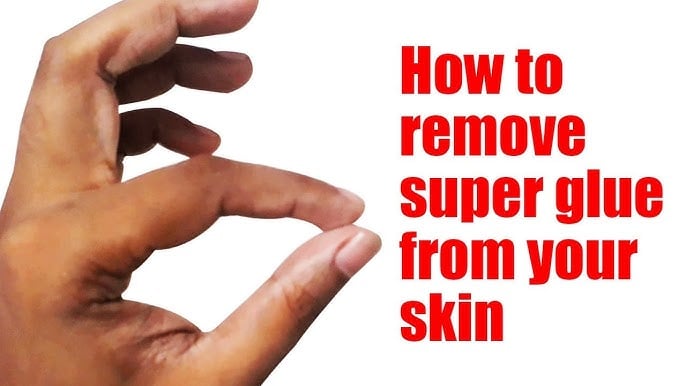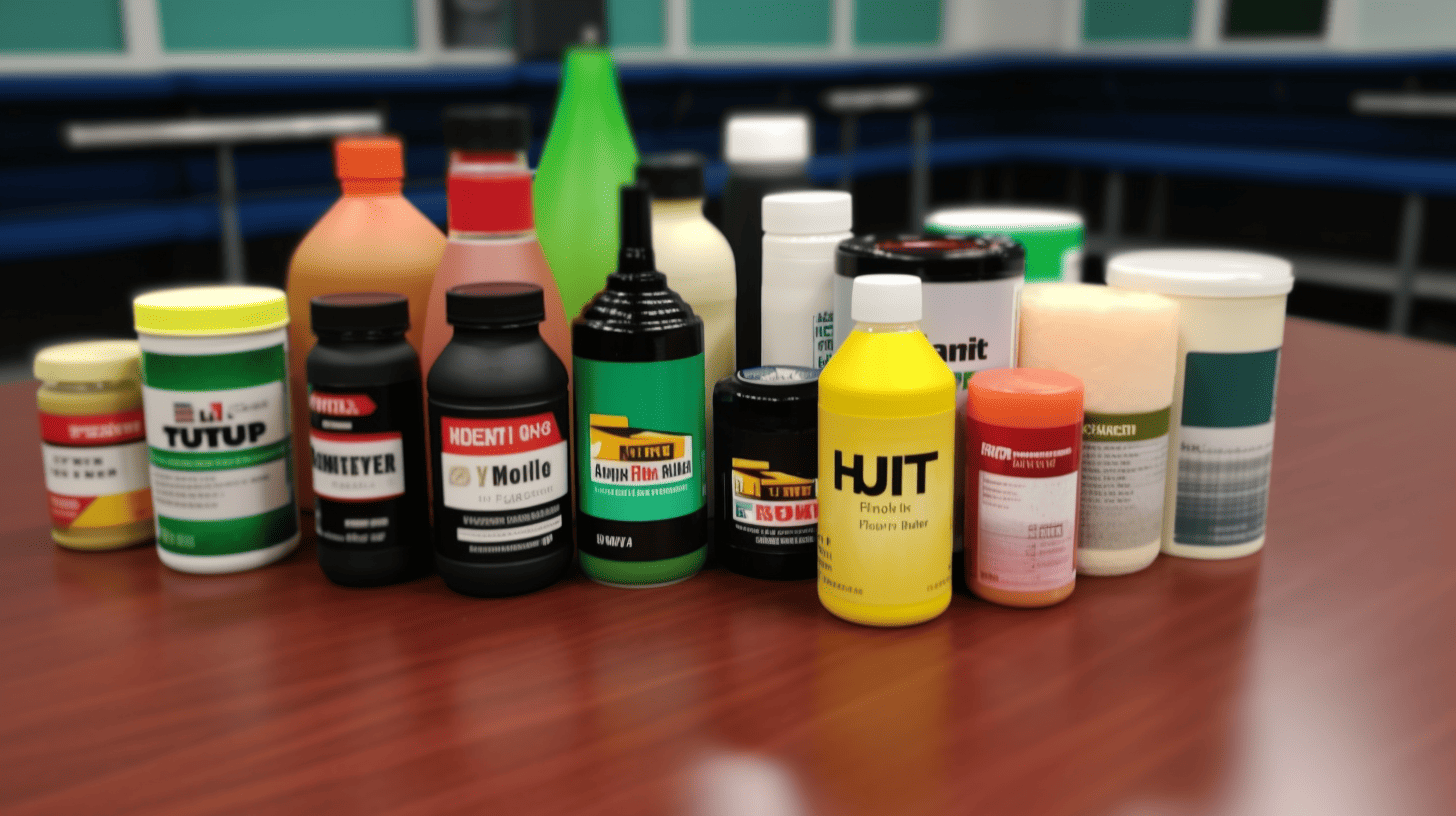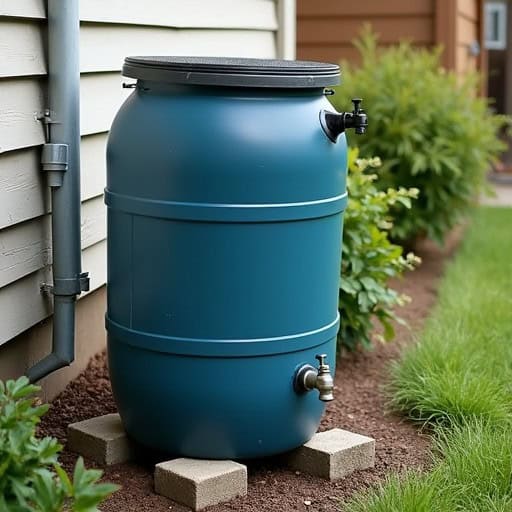Super glue, also known as cyanoacrylate adhesive, is renowned for its incredibly strong bonding properties. While it’s a lifesaver for quick repairs, accidental skin contact can lead to panic and discomfort. This comprehensive guide will walk you through various methods to safely remove super glue from your skin, along with essential prevention tips and aftercare advice.
Understanding Super Glue and Its Adhesive Properties
Super glue forms an incredibly strong bond within seconds of application. This rapid bonding occurs when the adhesive comes into contact with moisture, which is abundant on human skin. Common scenarios where super glue might accidentally get on skin include:
- Home repairs and DIY projects
- Crafting and model building
- Nail care mishaps
- Electronics repairs
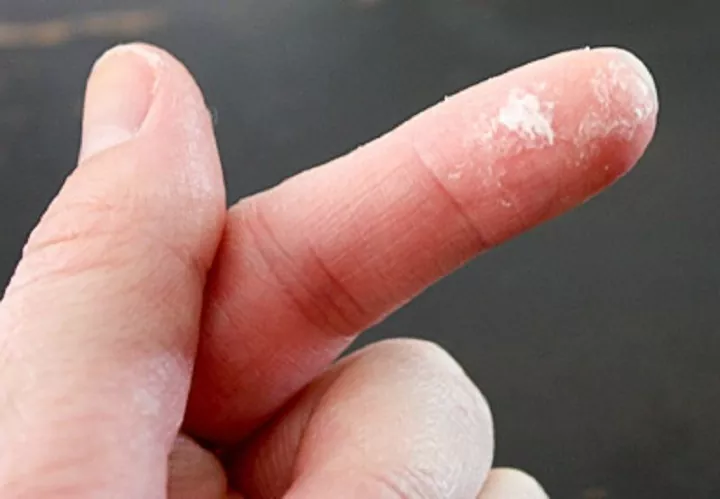
remove super glue off skin
Prevention: The First Line of Defense
The best way to deal with super glue on skin is to prevent it from happening in the first place. Here are some essential prevention tips:
Wear protective gear: Always use gloves and long sleeves when working with super glue.
Use precision applicators: Opt for products with fine-tipped nozzles for more controlled application.
Work in a well-ventilated area: This reduces the risk of fumes causing irritation or accidental contact.
Keep skin moisturized: Dry skin is more prone to bonding with super glue, so maintain well-hydrated skin.
Store safely: Keep super glue out of reach of children and in a cool, dry place.
Also read: Best Glue For Ceramic
Immediate Actions When Super Glue Contacts Skin
If you find yourself in a sticky situation with super glue on your skin, follow these immediate steps:
- Don’t panic or forcefully pull bonded skin apart, as this can cause injury.
- Assess the situation and extent of the glue contact.
- If the affected area is small, you may be able to simply wait for the adhesive to wear off naturally.
- For larger areas or if you need to remove the glue quickly, proceed to one of the following removal methods.
Safe Methods for Removing Super Glue from Skin
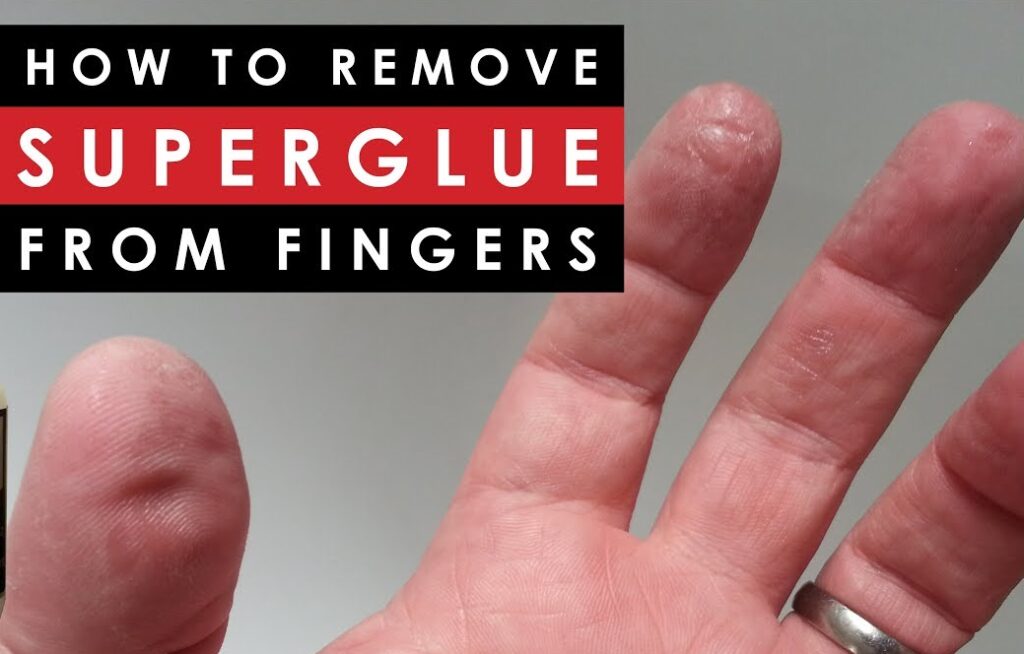
1. Warm Soapy Water Method
This gentle method is often effective for small amounts of super glue:
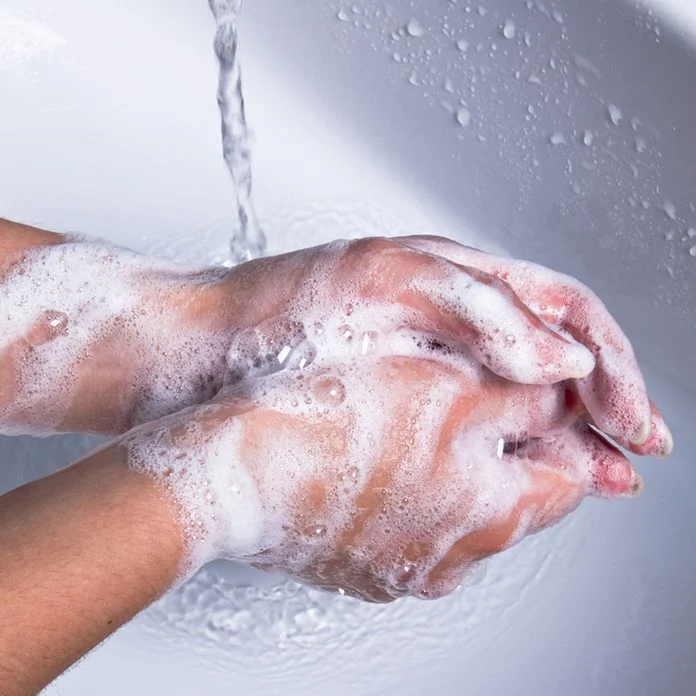
- Fill a bowl with warm water and add a mild soap or detergent.
- Soak the affected area in the warm soapy water for 5-10 minutes.
- Gently rub the area with a soft cloth or sponge in a circular motion.
- If the glue doesn’t come off easily, repeat the process.
- Pat the area dry with a clean towel.
This method works best for fresh super glue that hasn’t fully cured. It’s safe for most skin types and is often the first method to try.
2. Acetone (Nail Polish Remover) Method
Acetone is highly effective at breaking down super glue:
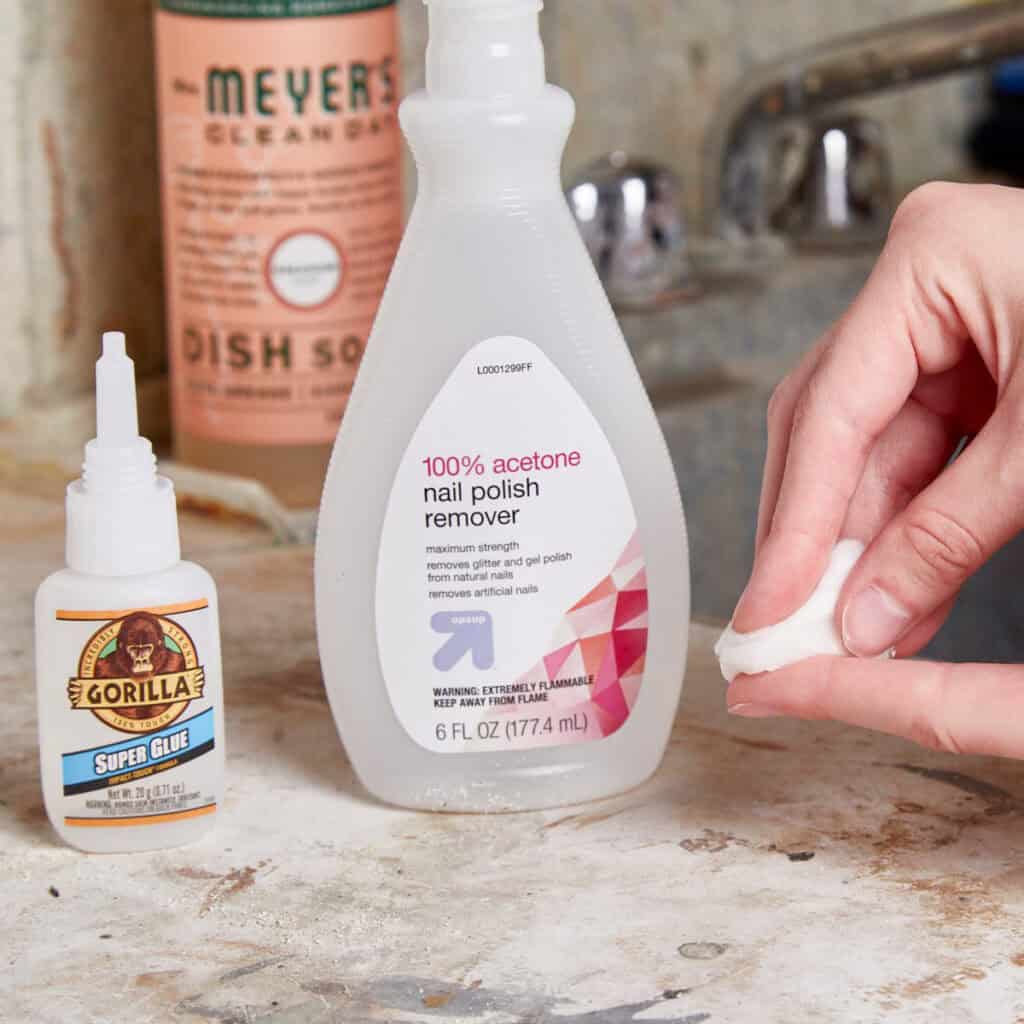
- Apply acetone-based nail polish remover to a cotton ball or swab.
- Gently dab the affected area, allowing the acetone to penetrate the glue.
- Wait for 1-2 minutes to let the acetone work on the adhesive.
- Carefully peel off the loosened glue using your fingers or a soft cloth.
- Wash the area thoroughly with soap and water.
- Apply a moisturizer, as acetone can dry out the skin.
Caution: Avoid using this method on sensitive areas or if you have cuts or abrasions on your skin. Test on a small area first to check for any adverse reactions.
3. Natural Oil Methods
Natural oils can be an effective and gentle way to remove super glue from skin:

- Apply olive oil, coconut oil, or even margarine to the affected area.
- Gently massage the oil into the skin for several minutes.
- As the glue begins to soften, carefully peel it away from the skin.
- Wash the area with soap and water after removing the glue.
- Apply a moisturizer to prevent skin dryness.
This method works by breaking down the glue’s adhesive properties, making it easier to remove without harsh chemicals. It’s particularly useful for those with sensitive skin or when dealing with larger areas of super glue contact.
4. Lemon Juice Method
Lemon juice’s natural acidity can help dissolve super glue:
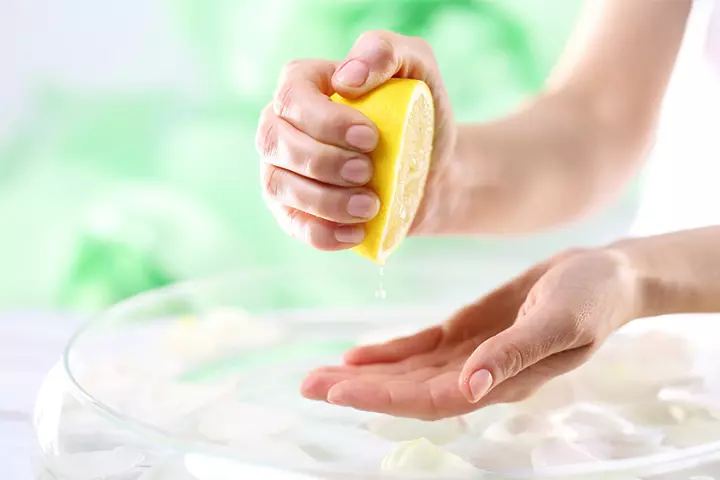
- Mix equal parts fresh lemon juice and water in a small bowl.
- Apply the solution to the glued area using a cotton swab or soft cloth.
- Let it sit for 5-10 minutes to allow the acid to work on the adhesive.
- Gently rub the area in a circular motion to remove the loosened glue.
- Rinse with warm water and pat dry.
- Apply a moisturizer to prevent skin irritation.
This method is particularly useful for small areas of super glue on the skin and is a great natural alternative to chemical removers.
5. Commercial Super Glue Removers
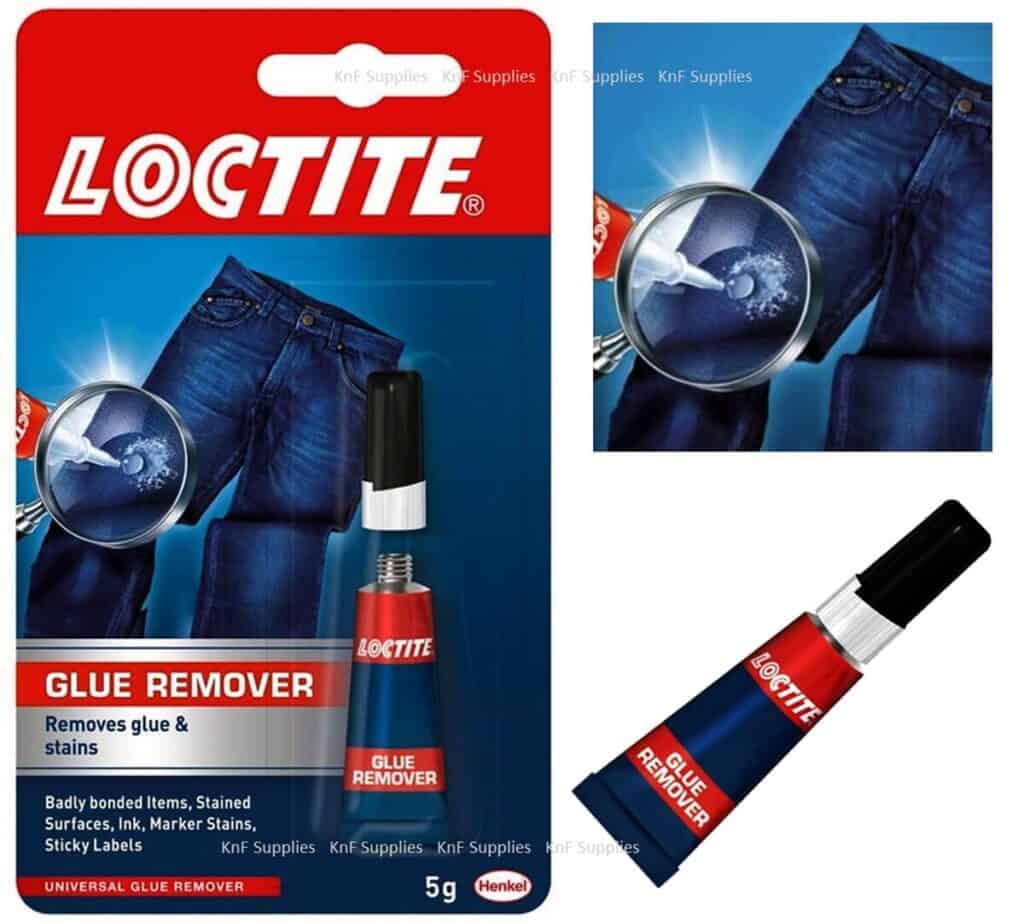
For stubborn cases, specialized products like Loctite Glue Remover can be effective:
- Purchase a commercial super glue remover from a hardware or craft store.
- Perform a patch test on a small area of skin to check for any adverse reactions.
- Follow the product instructions carefully.
- Apply the remover to the affected area using a cotton swab or as directed.
- Wait for the recommended time, then gently peel off the glue.
- Wash the area thoroughly with soap and water after use.
- Apply a moisturizer to soothe the skin.
Caution: Always read and follow the manufacturer’s instructions and warnings. Some commercial removers may contain strong chemicals that can irritate sensitive skin.
Special Situations
Removing Super Glue from Sensitive Areas
When dealing with super glue on sensitive areas like eyelids or lips:
- Do not attempt to force your eyelids or lips apart if they’re glued together.
- For eyelids, apply a warm, wet compress and allow the eyelids to gradually separate as the glue dissolves.
- For lips, rinse with warm water and apply petroleum jelly to help moisturize and separate the area.
- Use a cotton swab dipped in warm water to gently work at the edges of the glued area.
Important: If you cannot safely remove the glue or if you experience pain or vision problems, seek immediate medical attention.
Dealing with Super Glue Burns
Super glue can sometimes cause a chemical burn when it comes into contact with skin:

- Recognize the symptoms: redness, blistering, or a burning sensation.
- Rinse the area with cool running water for at least 15 minutes.
- Do not attempt to remove any glue that’s stuck to the burn.
- Apply an antibiotic ointment and cover with a sterile, non-stick bandage.
- Seek medical attention if the burn is severe, covers a large area, or is on a sensitive part of the body.
Aftercare
Once you’ve successfully removed the super glue:
- Wash the area gently with mild soap and lukewarm water.
- Pat the skin dry with a clean, soft towel.
- Apply a moisturizer or aloe vera gel to help soothe and hydrate the skin.
- Monitor the area for any signs of irritation, redness, or allergic reaction.
- Avoid using harsh soaps or exfoliants on the affected area for a few days.
If you experience persistent irritation, redness, or signs of infection, consult a healthcare professional.
When to See a Doctor
While most cases of super glue on skin can be handled at home, there are situations where professional medical help is necessary:
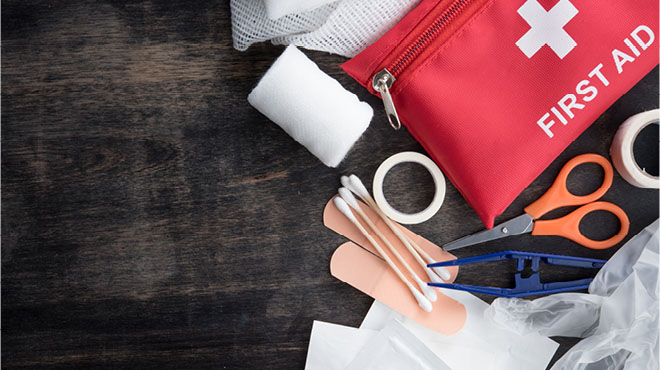
- If the glue is covering a large area of skin
- If you experience severe pain or signs of an allergic reaction (swelling, itching, difficulty breathing)
- If the glue is in or near your eyes, mouth, or other sensitive areas
- If you develop signs of infection, such as increased redness, swelling, warmth, or pus
- If you have a pre-existing skin condition that may be aggravated by home removal methods
- If you’ve tried multiple removal methods without success
Remember, it’s always better to err on the side of caution when it comes to your health and safety. If you’re unsure about how to proceed or if you’re concerned about potential complications, don’t hesitate to seek professional medical advice.
Conclusion: Safely Removing Super Glue from Skin
Accidentally getting super glue on your skin can be a frustrating experience, but with the right techniques, you can safely remove it without causing harm. Let’s recap the key methods we’ve discussed:
- Warm soapy water for fresh adhesions
- Acetone-based nail polish remover for stubborn cases
- Natural oils like olive or coconut oil for a gentle approach
- Lemon juice solution for its mild acidic properties
- Commercial super glue removers for tough situations
Remember, prevention is always better than cure. Always handle super glue with care, wear protective gear, and work in a well-ventilated area to minimize the risk of skin contact.
FAQs About Removing Super Glue from Skin
Q: Can super glue cause permanent damage to skin?
A: In most cases, super glue does not cause permanent damage to skin. However, it can cause temporary irritation or, in rare cases, chemical burns. If you experience severe pain or signs of a burn, seek medical attention.
Q: How long does it take for super glue to wear off skin naturally?
A: If left alone, super glue will usually peel off skin within a few days to a week. However, this can vary depending on the amount of glue and the area affected.
Q: Is it safe to use acetone on all areas of skin?
A: While acetone is effective, it’s not suitable for sensitive areas like the face or near the eyes. Always test on a small area first and avoid using it on broken or irritated skin.
Q: What should I do if super glue gets in my eye?
A: If super glue gets in your eye, do not attempt to force the eye open. Rinse with warm water and seek immediate medical attention.
Q: Can I use hand sanitizer to remove super glue from skin?
A: Some hand sanitizers contain alcohol which may help break down super glue. However, they are not as effective as the methods described in this article and may cause skin irritation.
Q: How can I prevent super glue from sticking to my skin in the future?
A: To prevent future incidents, always wear gloves when working with super glue, use precision applicators, work in a well-ventilated area, and keep your skin moisturized.
Q: Are there any natural alternatives to commercial super glue removers?
A: Yes, natural oils like olive oil or coconut oil can be effective in removing super glue from skin. Lemon juice can also help break down the adhesive.
Q: How do I remove super glue from clothing?
A: For clothing, try soaking the affected area in warm, soapy water, then gently scrubbing. For stubborn spots, acetone or a commercial adhesive remover may be necessary, but always test on an inconspicuous area first.
By following these guidelines and using the appropriate removal method for your situation, you can safely and effectively remove super glue from your skin. Always prioritize safety and don’t hesitate to seek medical help if you’re unsure or if the adhesive is in a sensitive area.
Remember, while super glue is an incredibly useful product for many household and craft projects, it’s essential to handle it with care. Keep it out of reach of children and always read and follow the manufacturer’s instructions for safe use and storage.
Additional Tips for Super Glue Safety
To further enhance your understanding of super glue safety and usage, consider these additional tips:
- Store properly: Keep super glue in a cool, dry place away from direct sunlight to prevent premature hardening.
- Use in small amounts: Apply super glue sparingly to avoid excess that could potentially come into contact with skin.
- Have removal supplies ready: Keep acetone-based nail polish remover or a commercial glue remover on hand when working with super glue.
- Educate others: If you share your workspace or home with others, make sure they’re aware of the proper handling and safety precautions for super glue.
- Consider alternatives: For projects where skin contact is likely, consider using less aggressive adhesives or alternative bonding methods.
By incorporating these safety measures and being prepared for potential accidents, you can enjoy the benefits of super glue while minimizing risks to your skin and overall well-being.

